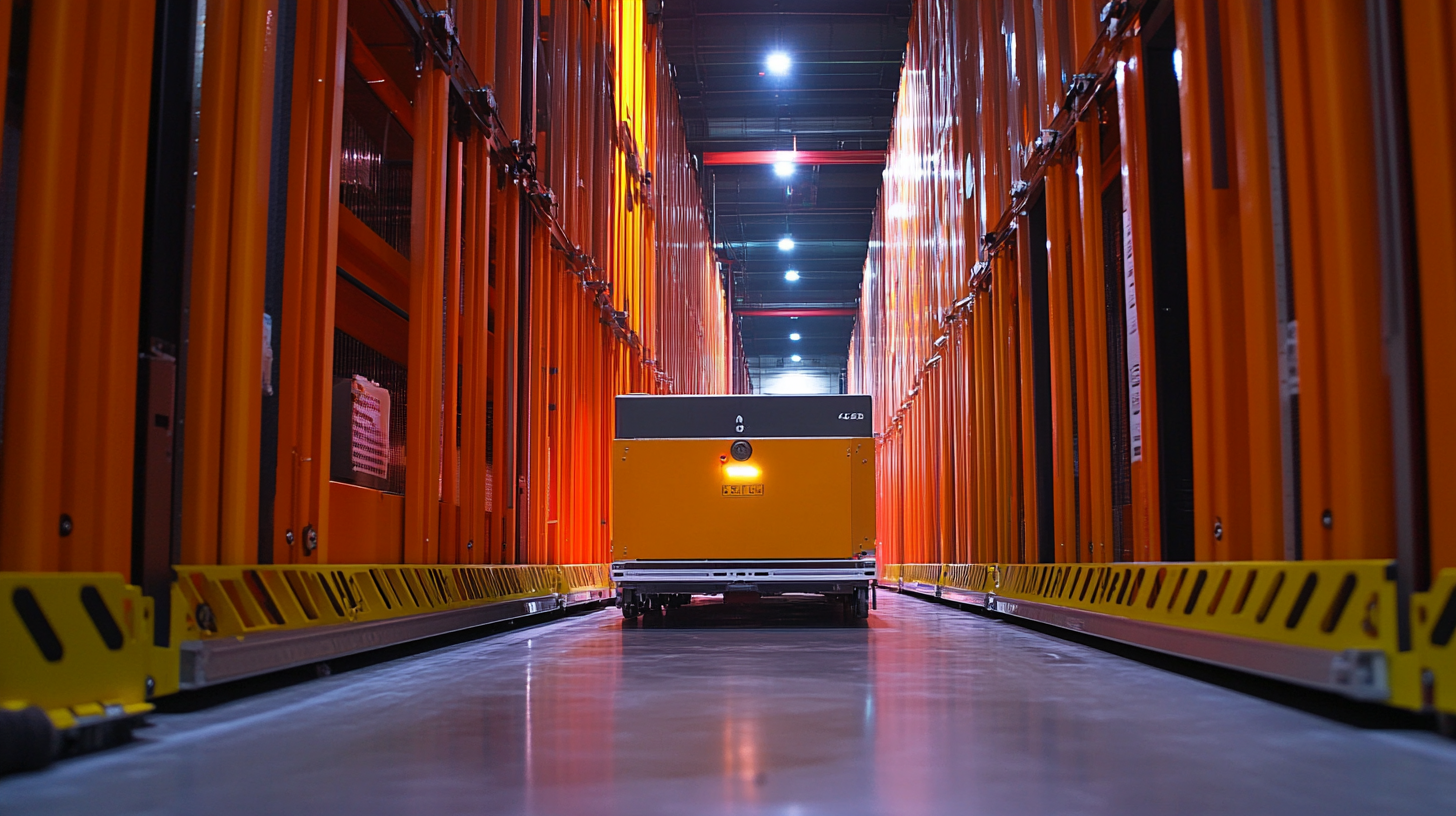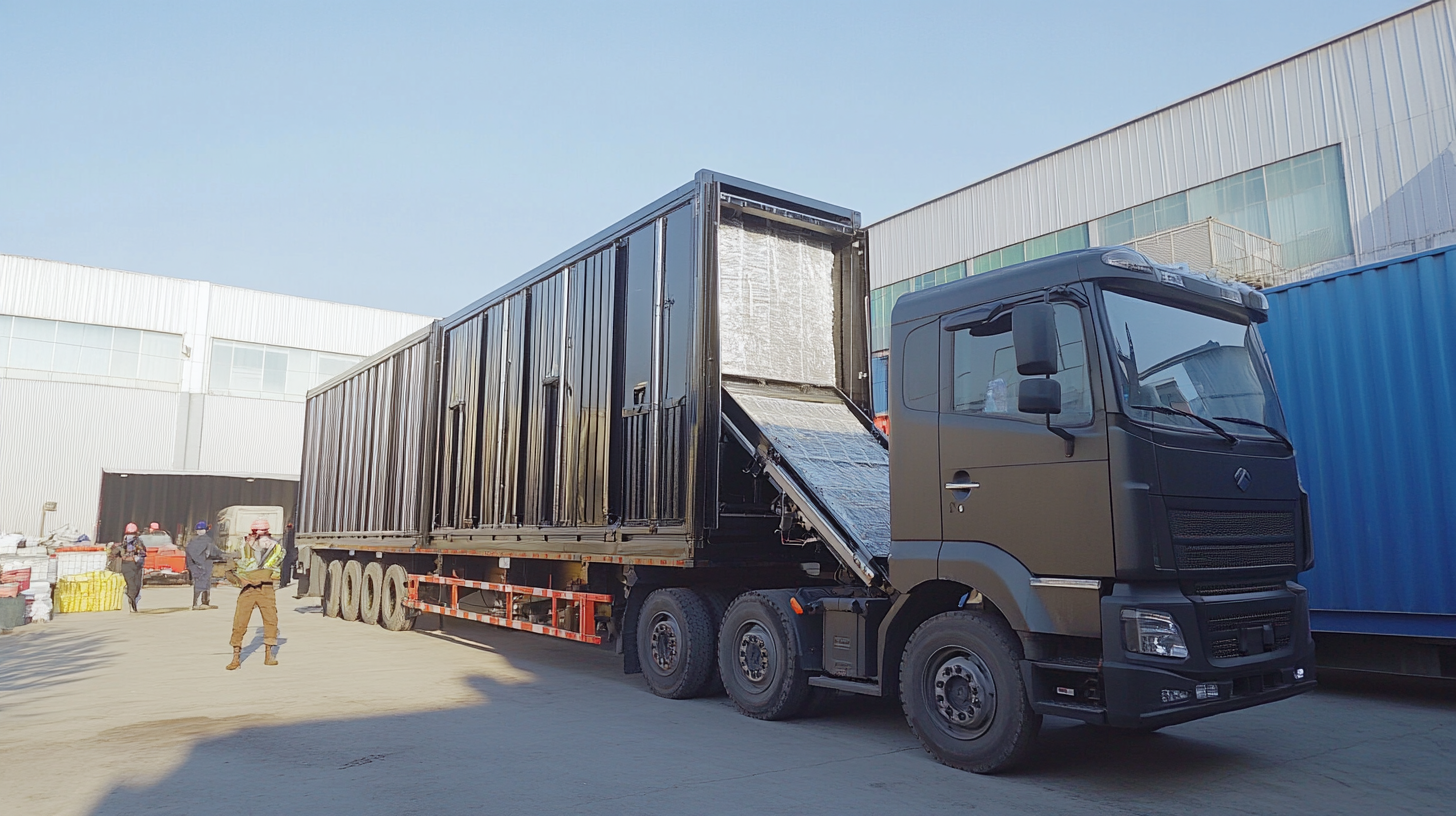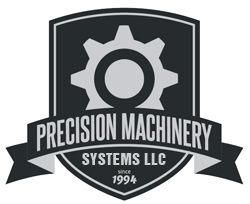Exploring Innovations in Compactor Industrial Technologies for Global Procurement Strategies in 2025
In the ever-evolving landscape of industrial efficiency, the Compactor Industrial sector has emerged as a critical focal point for organizations aiming to optimize their global procurement strategies by 2025. According to a recent report by Grand View Research, the global waste compaction market is expected to reach USD 10.2 billion by 2025, growing at a compound annual growth rate (CAGR) of 4.9% from 2019. This growth is driven by the increasing emphasis on sustainable waste management practices among industries, which underscores the need for innovative compactor technologies that not only enhance operational efficiency but also align with environmental objectives.
As companies navigate the complexities of global supply chains, the integration of cutting-edge compactor technologies is becoming essential for maintaining competitive advantage. The World Economic Forum's insights suggest that automating waste management processes through advanced compactors can result in significant cost savings and reduce waste volume by up to 80%. This highlights the importance of adopting innovative solutions that cater to evolving market demands. In exploring these advancements, this blog will delve into how firms can leverage Compactor Industrial technologies to refine their procurement strategies and improve overall sustainability in an increasingly resource-conscious world.

Emerging Trends in Compactor Technologies: A 2025 Perspective
As we look towards 2025, the landscape of compactor industrial technologies is poised for significant transformation. Emerging trends indicate a shift towards more efficient and sustainable practices, driven by global procurement strategies that prioritize innovation and environmental consciousness. With a heightened focus on waste reduction, industries are exploring advanced compacting solutions that enhance resource recovery while minimizing ecological impact. One notable trend is the integration of smart technology within compactors. These smart systems utilize IoT (Internet of Things) capabilities to monitor and optimize compaction processes in real-time. This not only increases operational efficiency but also provides valuable data analytics that organizations can use to improve procurement strategies and make informed decisions regarding resource allocation. As companies adopt these intelligent solutions, they can expect to see reduced operational costs and improved waste management practices. Additionally, the push for sustainable materials in manufacturing compactors is gaining momentum. As businesses worldwide commit to carbon neutrality and circular economy principles, the development of compactors made from recycled and eco-friendly materials is becoming a priority. This shift not only fulfills corporate social responsibility goals but also appeals to increasingly environmentally conscious consumers. By focusing on these emerging trends, organizations can align themselves with global efforts toward sustainability while enhancing their competitiveness in the market.

The Role of Sustainability in Industrial Compactor Procurement Strategies
In recent years, the importance of sustainability has surged, reshaping the landscape of industrial procurement strategies. As organizations prioritize environmental stewardship, procurement professionals are increasingly focused on integrating sustainable practices into their processes. The evolution of industrial compactor technologies, aimed at reducing waste and enhancing resource efficiency, serves as a prime example of this shift towards sustainability. By implementing these innovations, companies can not only meet regulatory demands but also respond to the growing consumer preference for environmentally friendly practices.
The General Services Administration's new OneGov strategy exemplifies the federal government's recognition of sustainability's role in procurement. This initiative aims to modernize how goods and services are acquired, emphasizing the need for eco-friendly solutions within government contracting. As procurement practices are re-evaluated, there is an opportunity for organizations to align their purchasing strategies with broader sustainability goals, fostering a culture of innovation and responsibility.
Moreover, the competitive landscape is evolving, prompting smaller countries to explore innovative procurement solutions that incorporate sustainability. Recent European initiatives have spotlighted the unique challenges faced by these nations, encouraging them to adopt procurement strategies that not only drive innovation but also prioritize sustainability. This dual focus can enhance their competitiveness in the global market while contributing positively to environmental outcomes, ultimately driving a transformation in how industrial compactors and other technologies are procured worldwide.

Leveraging Automation and AI in Compactor Operational Efficiency
As we venture into 2025, the compactor industry is witnessing a transformative shift driven by automation and artificial intelligence (AI). These advancements are not only optimizing operational efficiency but also reshaping global procurement strategies. According to a recent report by Transparency Market Research, the global compactor market is projected to grow significantly, with a compound annual growth rate (CAGR) of 5.8% from 2023 to 2029. This upward trend underscores the urgent need for companies to incorporate innovative technologies into their operational frameworks.
Automation in compactors enhances performance by minimizing manual intervention and streamlining processes. For instance, automated compactors equipped with IoT sensors can monitor waste levels in real-time, enabling predictive maintenance and reducing downtime. A study by MarketsandMarkets indicates that businesses implementing automation in their operations can achieve a productivity increase of up to 20%. This level of efficiency not only optimizes resource allocation but also drives down operational costs, reflecting positively on the bottom line.
Moreover, the integration of AI analytics allows for smarter decision-making in procurement strategies. By analyzing historical data and market trends, AI can help companies forecast demand more accurately, ensuring that the right types and quantities of compactors are procured at the optimal time. As per a report by McKinsey, AI-driven supply chain management can lead to a 50% reduction in forecasting errors, thereby enhancing overall supply chain resilience. The convergence of automation and AI in compactor technologies is not just a trend; it's a necessity for companies aiming to thrive in a competitive landscape as we move into the future.

Global Market Dynamics Influencing Compactor Technology Adoption
The global market for compactor technologies is undergoing a transformative shift influenced by various dynamics. As industries increasingly prioritize sustainability and cost-efficiency, the adoption of advanced compactor technologies has gained momentum. The integration of smart technologies, such as IoT sensors and data analytics, allows for real-time monitoring and optimization, driving efficiency in waste management and resource allocation.
Economic factors play a crucial role in shaping global procurement strategies. Markets worldwide are responding to the pressing need for sustainable practices, prompting companies to invest in innovative compactor solutions that reduce environmental impact while enhancing performance. Additionally, shifts in regulatory frameworks are compelling organizations to adopt eco-friendly technologies, positioning advanced compactors as viable alternatives in various sectors, from municipal waste management to manufacturing.
As we look toward 2025, the influence of globalization cannot be understated. Companies are leveraging international partnerships to procure cutting-edge compactor innovations, promoting knowledge transfer and skill development. This collaborative approach enables firms to navigate regional challenges and align with global sustainability goals, fostering a more resilient and forward-thinking industry landscape. The future of compactor technology adoption is not merely about enhancing efficiency; it is also about forging strategic alliances that align with the evolving demands of a sustainable global economy.
Case Studies: Successful Implementation of Innovative Compactors in Industry
The compactor industry is witnessing transformative innovations that are reshaping global procurement strategies, especially as we head toward 2025. Case studies spotlighting successful implementations of advanced compactor technologies illustrate the substantial impact these innovations have on efficiency and sustainability within various sectors. For instance, the recent development at Wenzhou Dongyu Power Plant, which was recognized as a national-level industrial heritage site, underscores the significance of integrating modern innovations into historical frameworks, ensuring that productivity aligns with preserving our industrial past.
A notable example of success in the realm of compactors is evident in the autonomous systems employed at contemporary industrial sites. Advanced compacting solutions not only optimize space utilization but also enhance waste management efficacy. According to an industry report, automation in waste compaction can boost operational efficiency by up to 30%, drastically minimizing costs associated with manual handling and transportation. This is especially crucial in urban areas where real estate is at a premium.
Moreover, the integration of artificial intelligence in compacting machines is streamlining processes like data analysis for predictive maintenance, potentially reducing downtime by 25%. Such advancements not only contribute to economic savings but also promote a greener industrial footprint, significantly lowering greenhouse gas emissions. With these case studies and innovations paving the way, it becomes clear that the future of the compactor industry will heavily rely on adaptive strategies that embrace technology while addressing global sustainability goals.

